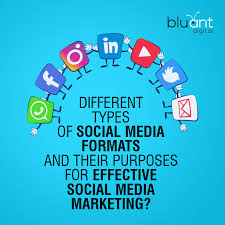In today’s hyper-connected world, social media has become an indispensable tool for businesses and individuals alike. For bloggers, it’s not just a platform for self-promotion; it’s a dynamic ecosystem where they can connect with their audience, build a community, and drive traffic back to their website.impact of social media
This guide will delve deeper into the art and science of leveraging social media for successful blog writing.
Table of Contents
Toggle1. Define Your Social Media Strategy:
before you even start posting, it’s crucial to have a clear strategy in place.
- Identify Your Target Audience:
- Who are you trying to reach?
- What are their interests?
- Where do they spend their time online?

- Choose the Right Platforms:
- Instagram: Visual focus, ideal for lifestyle, food, fashion, travel.
- Twitter: Real-time updates, news, discussions, ideal for current events, humor, customer service.
- Facebook: Broad reach, diverse audience, ideal for businesses, community building.
- LinkedIn: Professional networking, industry news, ideal for career advice, B2B.
- Pinterest: Visual search engine, ideal for DIY, recipes, inspiration.
- TikTok: Short-form video content, entertainment, trends, ideal for younger audiences.
- Set Realistic Goals:
- Increase brand awareness?
- Drive website traffic?
- Generate leads?
- Build a community?
2. Optimize Your Blog Posts for Social Media:impact of social media
- Create Compelling Headlines:
Keep them short, catchy, and intriguing.
- Use numbers, questions, or strong verbs to grab attention.
- Include relevant keywords.
- Use High-Quality Visuals:
- Eye-catching images and videos are essential.
- Use original photos, infographics, and short, engaging videos.
- Optimize images for social media platforms (e.g., correct dimensions, file size).
- Write Concise and Engaging Copy:
- Break down long paragraphs into shorter, digestible chunks.
- Use bullet points, numbered lists, and bolding for readability.
- Incorporate relevant hashtags strategically.
- Include a Clear Call to Action:
- Encourage readers to click through to your blog post.
- Use phrases like “Read More,” “Visit the Blog,” or “Learn More.

3. Content Pillars and Consistency:
- Develop Content Pillars:
- Identify recurring themes or topics that resonate with your audience.
- This provides a framework for consistent content creation.
- Create a Content Calendar:
- Plan your social media posts in advance.
- Schedule posts to ensure consistent engagement.
- Use scheduling tools like Hootsuite or Buffer to save time.
4. Engage with Your Audience:
- Respond to Comments and Messages:impact of social media.
- Build relationships with your followers by engaging in conversations.
- Show that you value their feedback.
- Run Contests and Giveaways:
- Increase engagement and attract new followers.
- Collaborate with Other Influencers:
- Expand your reach and introduce your blog to new audiences.
- Go Live:
- Host live Q&A sessions, product demos, or behind-the-scenes glimpses.
5. Track and Analyze Your Results:impact of social media
- Monitor Key Metrics:
- Track your social media reach, engagement, website traffic, and conversion rates.
- Use platform-specific analytics tools (e.g., Instagram Insights, Facebook Page Insights).
- Analyze Your Competitors:
- See what your competitors are doing well on social media.
- Identify areas for improvement in your own strategy.
- Experiment and Iterate:
- Continuously test different content formats, posting times, and strategies.
- Adjust your approach based on what’s working and what’s not.

6. Stay Updated on Social Media Trends:
- Follow Industry News and Blogs:
- Stay informed about the latest social media trends, algorithms, and best practices.
- Experiment with New Features:
- Try out new features like Reels, Stories, and Live videos to see what resonates with your audience.
Examples of Effective Social Media Posts:
- Instagram:
- Share a visually appealing image or short video clip from your blog post.
- Use relevant hashtags and a concise, engaging caption.
- Include a link in your bio or use a link in bio tool.
- Twitter:
- Share a short, attention-grabbing quote from your blog post.
- Use relevant hashtags and mention relevant accounts.
- Facebook:
- Share a longer excerpt from your blog post with a compelling image.
- Ask a question related to the topic to encourage discussion.
By implementing these strategies, you can effectively leverage social media to promote your blog, build a loyal following, and achieve your blogging goals. Remember that consistency, engagement, and a deep understanding of your audience are key to success impact of social media.
